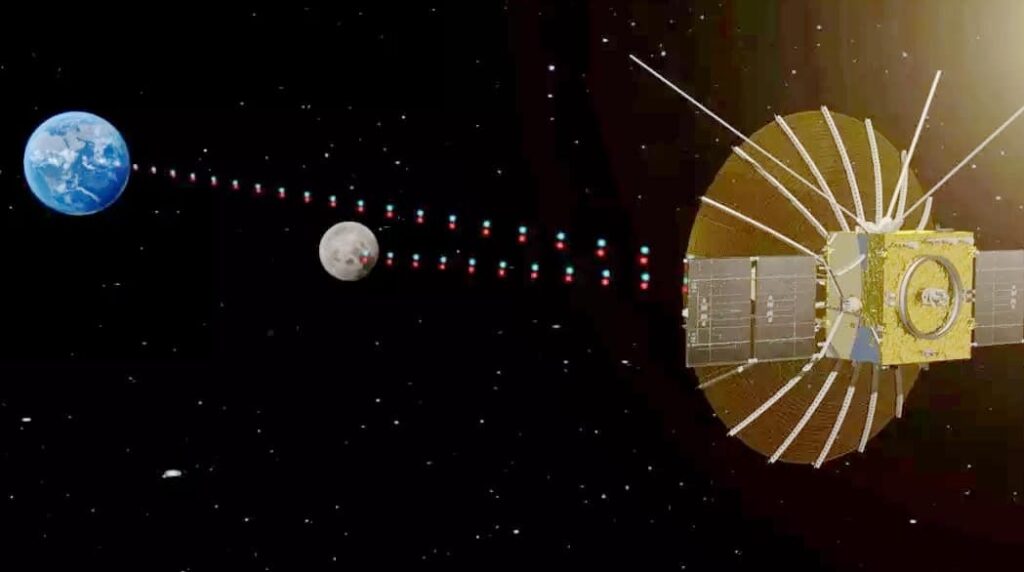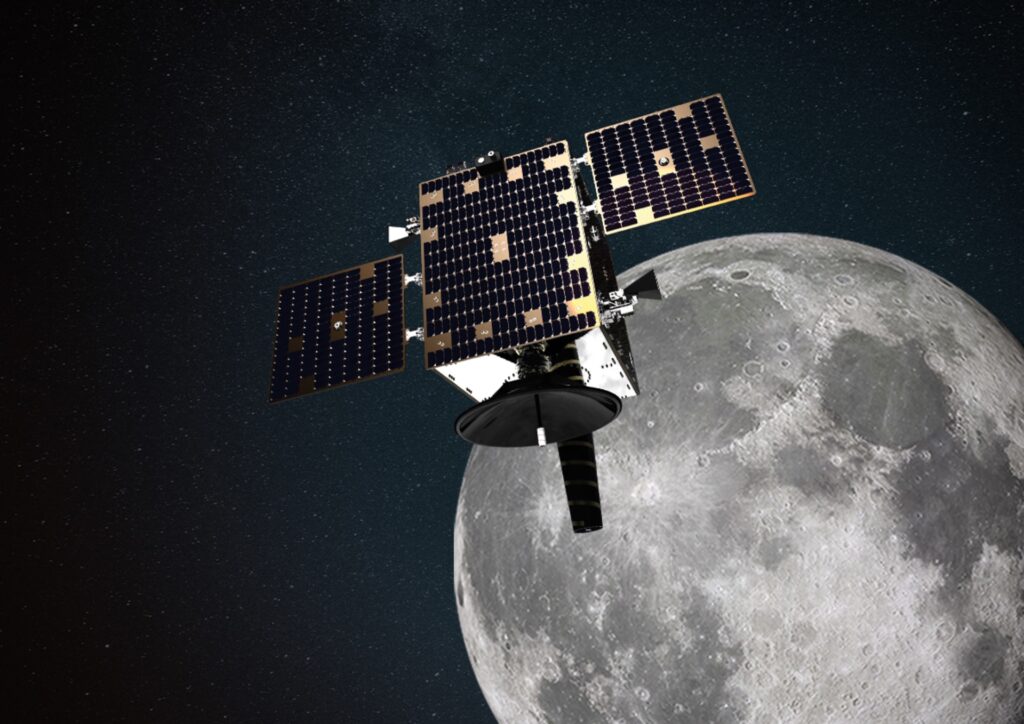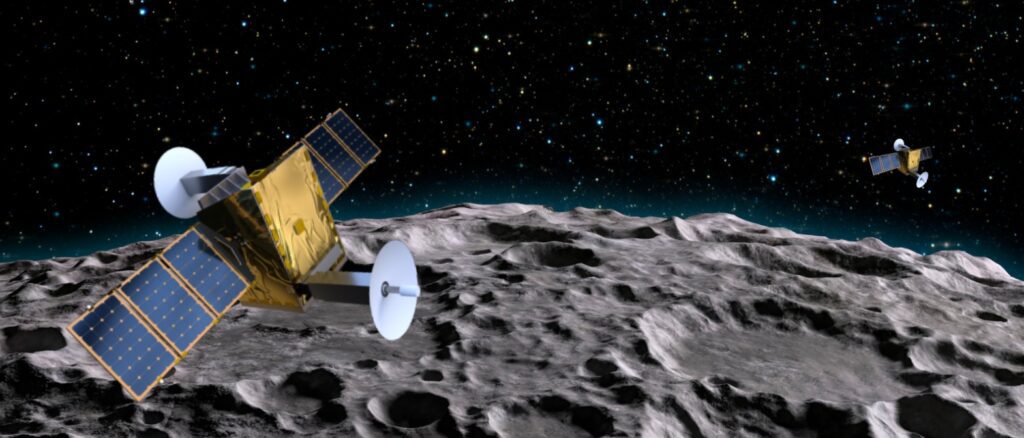While landings on the Moon have been done before and are now regarded as a known technology, something not previously catered for is communications to the lunar far side. For example, the Apollo and Surveyor lunar landing programmes all touched down on the Earth facing lunar surface and hence had direct line of sight communications with Earth. The only exception was when the Apollo spacecraft flew behind the Moon, meaning that communications were temporarily cut off. However, now that both human and unmanned lunar exploration and minerals prospecting missions to the far side and the poles are being planned, there is a perceived need to have a proper lunar data and communications relay satellite system with perhaps a navigation secondary function.
First out of the blocks was China. In June 2018, the DFH Satellite Company-built 449 kg Queqiao (“Magpie Bridge”) relay satellite (aka the Chang’e 4 Lunar Relay) was positioned in a halo orbit around the Earth-Moon L2 Lagrangian point behind the Moon. This now allows full communications to the Chang’e lunar space programme’s orbital and landing/rover craft when required, especially for communications to the lunar far side. The initial flight to benefit was the Chang’e 4 mission – the first ever soft landing on the far side in 2019.
A second Queqiao lunar communications relay satellite is believed to be in production for launch in 2024, probably on a Long March 5 launch shared with the Chang’e 7 lunar lander/orbiter mission.
But China is not the only nation or international organisation planning data relay. With the European Space Agency as an anchor customer for its communications relay services, SSTL (Surrey Space Technology Limited) in the UK is building the Lunar Pathfinder spacecraft. It is designed to provide affordable communications services to lunar missions via S-band and UHF links to assets on the surface and in orbit around the Moon, and an X-band link to Earth. Due to launch 2025, the Lunar Pathfinder spacecraft will be a mission enabler for polar and far-side missions without direct line of sight of the Earth.
And the US is catching up fast. During March, Lockheed Martin announced it was setting up a subsidiary called Crescent Space Services to build a relay network called Parsec. Initially a pair of satellites will be built using Lockheed Martin’s Curio small satellite bus. These first satellites, which Crescent and Lockheed Martin refer to as Nodes of the Parsec network, should be deployed in 2025, even before the start of the NASA Artemis 3 mission to return people to the surface of the Moon. The spacecraft are also to be equipped with a kind of GPS-like navigation system transmitter.











